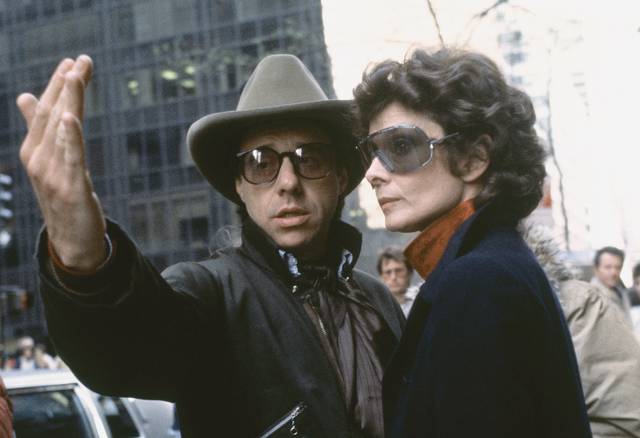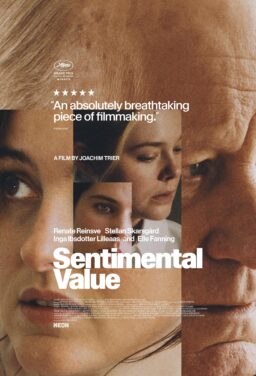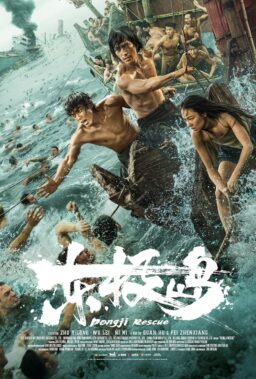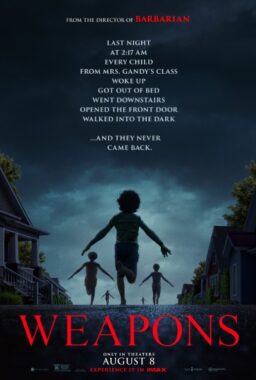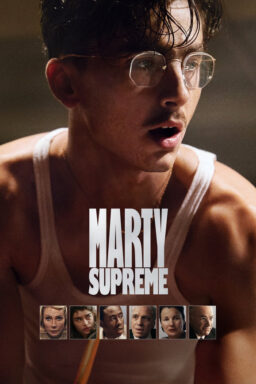When it comes to looking at the careers of famous filmmakers, I must confess that for whatever reason, I am invariably more interested in their less successful efforts—or at least the ones perceived as being less successful—than the well-known hits. If there is a Billy Wilder retrospective on TCM, I eagerly check the schedule in the hopes that “Buddy Buddy” will be showing. When I acquired my copy of colleague Matt Zoller Seitz’s mammoth tome about Oliver Stone, you best better believe that the first thing I did was flip to the section on “The Hand.” When it comes to the oeuvre of Peter Bogdanovich, who made three enormous critical and commercial hits in a row in the first half of the Seventies in “The Last Picture Show” (1971), “Whats Up, Doc” (1972) and “Paper Moon” (1973), before embarking on a series of decidedly less successful cinematic ventures over the remainder of the decade, I have to say that as much as I admire those early hits, it is those latter films that really stand out for me as examples of his genuine gifts as a filmmaker. “Daisy Miller” (1974) was a nicely understated take on the Henry James story, “At Long Last Love” (1975) was a wildly ambitious and charming homage to the musical-comedies of the 30s, “Nickelodeon” (1976) was an affectionate tribute to the early days of American film and “Saint Jack” (1979) was a brilliantly done character study of an ambitious hustler trying to make a living in Singapore. Then there is the film that culminated this era of directing for him, the romantic comedy “They All Laughed,” a film that many have likely never even heard of, let alone seen. If you have heard of it, it is probably because of the tragedy during its production that would eventually kill its chances for release and plunge Bogdanovich into bankruptcy to boot. And yet, if I had to pick one of his films as his best, that is the one that I would choose without any hesitation—while the backstory behind the film may be grim and gloomy, the movie itself is an utter delight from beginning to end and is as fresh, funny and vital to look at today as it was back in 1981.
“They All Laughed” is ostensibly a romantic comedy/detective story hybrid about a couple of private eyes who have been hired by suspicious husbands to secretly follow their wives around New York City to see if they are being unfaithful, only to become involved with the women themselves. For the older and more cynical John (Ben Gazzara), he finds himself immediately smitten by the wife of a possibly shady businessman—since the wife is played by screen icon Audrey Hepburn (in what would prove to be her last lead role in a theatrical feature. For the younger and goofier Charles Rutledge (John Ritter), he also falls head over heels (literally at one point) for the beautiful Dolores (Dorothy Stratten, in what would sadly prove to be her lone major film role). Further complications are introduced in the form of Christy Miller (Colleen Camp), an up-and-coming country singer who tries to make John jealous by throwing herself at Charles and Sam (Patti Hansen), a sexy cab driver who winds up befriending John as well.
It is hard to know how “They All Laughed” would have fared in the marketplace if everything had gone according to plan—whimsical romantic comedies, especially those that broke most of the expected artistic rules (such as telling a story deliberately lacking in narrative structure and resolution, not to mention any real antagonist), were not exactly thriving at the box-office as the 1980s began. However, any chance that it might have had of succeeding pretty much disappeared for good on August 14, 1980, when Stratten, the current Playboy Playmate of the Year and Bogdanovich’s lover, was brutally murdered by her estranged husband, who then killed himself. Fearing that audiences could never bring themselves to watch a romantic comedy co-starring someone who died in such a grisly and public way, no studio was willing to pick it up for distribution and a grieving Bogdanovich decided to sink most of his own personal fortune into buying the film back and distributing it himself. Although it got some good reviews along the way, Bogdanovich did not ultimately have the resources to distribute it properly and the film bombed, sending the director into a personal and professional tailspin as it slipped into an obscurity that would only be partially alleviated by a DVD release in 2006 and praise for it from such current cinematic icons as Quentin Tarantino and Wes Anderson.
Seen today, 35 years after its aborted debut and the controversy surrounding it, one can look at “They All Laughed” and finally recognize what an absolute charmer it really is. The mixture of mirth and melancholy on display could have resulted in a disastrous mishmash of tones but Bogdanovich handles it all with just the right touch to keep things humming along properly. The dialogue is sharp, funny and does an excellent job of evoking the colorful patter of old screwball comedies without overdoing it. It looks gorgeous (thanks to cinematographer Robby Müller), the soundtrack is an interesting combination of genres covering the gamut from Frank Sinatra (including the standard that give the film its title) to jazz to a number of country-western songs and there are a collection of lovely performances from the eclectic cast—Gazzara and Hepburn strike a lot sparks together, John Ritter puts his gift for physical humor to excellent use here, Stratten has a screen presence that cannot be denied and Hansen, a former model who would only make one more film before abandoning acting forever, essentially steals the entire movie with her sexy and sassy turn as the cabbie—it is too bad she bailed on acting because, based on the evidence seen here, she could have become a great screen comedienne.
If any of what I have written has intrigued you and you live in the Chicago area, you are in luck—on October 17, the Chicago International Film Festival will be hosting a rare theatrical screening of “They All Laughed.” He will also be on hand the day before to receive the Gold Hugo Lifetime Achievement Award and present a screening of “One Day Since Yesterday: Peter Bogdanovich and the Lost American Film,” a documentary that covers both his career in general and the making of “They All Laughed.” To help promote these screenings, Bogdanovich got on the phone to talk to me about the history of “They All Laughed” as well as its ultimate legacy.

In the past, you have stated that “They All Laughed” is your personal favorite of all of your films. What is it about this one that makes you feel that way?
There are a lot of reasons. Dorothy and I were very close on that picture. I just feel with that picture that if someone were to ask me what I liked, I would say that “They All Laughed” was very personal to me and sort of exemplifies all my thinking. It is a personal film based on experiences I’ve had. I was very emotionally involved with that film, more so than with other films that I didn’t write.
It has also become a favorite film of yours among fellow filmmakers—in the “One Day Since Yesterday” documentary, we see people like Quentin Tarantino, Wes Anderson and Noah Baumbach talking about their love for it. What do you think the attraction to it is for a younger generation of filmmakers like them?
I don’t know, to tell you the truth. I’m not sure but I am glad about it. There is something kind of loose about it and it has a kind of magic to it but I can’t say that I had anything to do with that—it just happened. It was a combination of all those women and the guys like John Ritter, who was a dear person. I don’t know. I have never been able to figure out why but it is true that people like Quentin and Wes love it and have gone on record as saying that it is one of their favorite films.
It is a fascinating film to watch in many ways because it quietly breaks so many rules of conventional cinema as it goes along. It is sort of inspired by a couple of classic screen genres—the screwball comedy and the detective story—but is not particularly beholden to the conventions of either one, it mixes moments of frothy comedy in the storyline with moments of genuine melancholy, it doesn’t have an antagonist per se and there are even long stretches, especially right at the very beginning, in which there is no dialogue at all save for a couple of barely overheard words here and there.
One of my favorite films is a picture that Howard Hawks did called “Rio Bravo.” And in the opening of that one, there is no dialogue for quite a while. I was always impressed with that and I thought I would try the same thing.
I like when I see a film and it doesn’t quite reveal exactly what kind of movie it is going to be for a while. I like to keep the audience from sort of knowing what kind of movie it is going to be. I remember I screened the film for Frank Sinatra at his place in Palm Springs before it came out because we used four of his songs. He had some other people over and when the film started, no one was reacting. There were no reactions at all for a while until finally Frank said out loud, “Oh, it’s a romantic comedy!” and everybody finally relaxed.
What was the genesis of “They All Laughed”?
I was talking with Blaine Novak and a couple of other people who were working with me on releasing “Saint Jack.” I said that I would like to do a movie about modern relationships that would include my experiences and Ben Gazarra’s experiences and so on. I also thought it would be funny to do a movie that was a detective picture in which the detectives get involved with the women they are following. That was the basic plot idea that I had and as you can see, we didn’t spend an enormous amount of time on the intricacies of the detective story—I didn’t do any research on detectives because I didn’t care if that was accurate or not. I saw that just as something to hang a hat on, that whole detective aspect. It was really more about the relationships and what relationships were like at that time in my life and for other people at that time.
You have said that in writing the screenplay for the film, you were writing the parts specifically for the actors who wound up playing them.
All the parts were written for the people who played them. I wrote Ben Gazarra a part knowing that he was going to play it and the same for Audrey and everybody. All the parts were based on the people who played them in many ways.

Can you talk a little about the visual style of the film? The film is more or less a love letter to New York City but it isn’t a tourist kind of movie that takes viewers to all the overly familiar landmarks—it is more like a New York movie who live there every day. At one point in the documentary, Quentin Tarantino mentions that to him, it has the look and feel of a European film …
It does have a European quality to it. I don’t know what to say about that but you are correct about that there is no melodramatic plot or any heavies, other than the two husbands that you don’t really meet for very long.
How did you come to work with Robby Müller, the German cinematographer who was just beginning to make a name for himself around this time for his work with Wim Wenders?
On “Saint Jack,” which is the film I made before “They All Laughed” the year before, we were in Singapore and had hired this French or Italian cameraman—I can’t remember now—who was supposed to shoot it. We were already in Singapore and I got a call from him saying that Fellini was doing a new picture and that he had been working with him for years and couldn’t do our movie. Cybill Shepard was involved with the film—she was one of the producers—and I called her in Memphis and told her that there was this new film from Germany called “The American Friend” that supposedly had a good cameraman and asked if she would see it and tell me what she thought. She went and saw it and called me back and said “I didn’t like the film very much but the camerawork was wonderful—a guy named Robby Müller.” We hired Robby off of that and once I worked with him, I enjoyed it so much that I asked him to do “They All Laughed” because I wanted to work with him again.
At the point in your career when you made “They All Laughed,” you had worked with big stars like Burt Reynolds and Barbra Streisand and screen legends like Boris Karloff and Ben Johnson. In this film, however, you were working with a genuine screen icon in the one and only Audrey Hepburn. Considering that she wasn’t making very many films at that point in her career—I believe her only screen appearance after this film was a supporting role in Steven Spielberg’s “Always” nearly a decade later, what was it like to get her to do the film and to work with her?
What happened was that Ben and Audrey had done a picture together called “Bloodline” and they got along very well—Ben was crazy about her and she was very fond about Ben. He talked about what a wonderful woman she was, how much he cared about her and how wonderful it was to work with her. I told him that I was going to write a part for her in this new picture and that as how that started. I had always liked her as an actress. In fact, the backstory of Audrey’s character closely followed her own backstory. It was the same thing with Dorothy—her backstory in the film was close to what was going on with her in real life.
All of the actors in the film are good—it is interesting to see someone like Gazzara in a romantic comedy context, Dorothy Stratten is charming as can be, John Ritter and Colleen Camp are both hilarious and Audrey Hepburn is divine as always—but while watching it again a few days ago, I was reminded once again that the entire thing is stolen by then-model Patti Hansen as the sexy and wisecracking cabbie who spends a lot of time flirting with Gazzara’s character. She is funny, sexy and amazing throughout but even though you could see her building a strong acting career for herself off of the talent demonstrated here, she would only go on to appear in one more film, the Rick Springfield vehicle “Hard to Hold.”
She didn’t think she was cut out for acting. She won the Alitalia prize for newcomer of the year but she kept saying “It was you, Peter—you did it all. I didn’t have much of anything to do with it.” Of course, she did but that was her attitude towards it. She just wasn’t motivated enough to continue pursuing acting, even though she should have. She fell in love with Keith (Richards) towards the end of the picture and that was sort of the end of that.
She hadn’t acted before at all. I dated her for a while and I thought she had an interesting quality and was very attractive. I wrote the part for her because I thought she would be great as the cab driver. The thing about her father—she is driving her father’s cab because her father had a heart attack—came from Patti’s own father having had a heart attack.

One of the most unusual aspects about the film is the music that’s utilized. As mentioned earlier, there are a few Sinatra songs heard in it, including the one that gives the film its title, and tunes from the likes of Benny Goodman—the kind of music that one might expect to hear in this kind of film. However, there is also a lot of country-western music heard in it as well—not only are there tunes from such legends as Johnny Cash and Waylon Jennings, the character that Colleen Camp plays is a rising country singer who winds up performing a few tunes throughout the film. Country music is clearly something that resonates with you—you utilized it before “They All Laughed” in “The Last Picture Show” and would do so afterwards in “The Thing Called Love”—but for a film set in Manhattan circa 1980, going that route is an odd choice.
Well, it was counterpoint, you know? Originally, the part that Colleen Camp was playing was that of a jazz singer in a club. Then I thought “That is pretty conventional” and I decided to change it. There was one radio station in New York that was playing country music and I thought that was find of funny to have country music in New York City. In fact, I started the picture with the radio playing that Roy Acuff song “Back In the Country” while driving over the Brooklyn Bridge. I like the counterpoint—the way that you didn’t expect that kind of music from a New York picture. I liked that aspect of it. We even wrote a country song, “One Day Since Yesterday,” which is a country song. I like country and fell in love with it on “The Last Picture Show.” and used quite a bit of it in “Paper Moon” as well. I thought it would be an interesting contrast.
“They All Laughed” is now 35 years old—when you see the film today, does it play differently for you today from how it did back then?
I think it means more to me than ever. I like it even better now. I don’t know exactly why. It came at a very special moment in my life, being able to prepare and make it in New York.
Besides presenting the screening of “They All Laughed,” you are also going to be introducing a screening of “One Day Since Yesterday: Peter Bogdanovich and the Lost American Film,” a documentary that looks at your career in general and chronicles the convoluted story surrounding its production and release. How did this film come about?
Bill Teck, the director, was very keen on “They All Laughed” and got in touch with me to say that he wanted to make a documentary about the making of it. He was very genuine on that subject and I guess that was how it started.
Outside of the festival screening, are there any future plans for “They All Laughed” that you know of—a reissue or possible a Blu-ray that could include the film proper, the documentary and perhaps even the episode of “WKRP In Cincinnati” in which Colleen Camp appeared as herself doing a radio interview to promote the film?
I don’t know, Peter. I was just talking to its French distributor because they want to bring it out in France again. Maybe they will do a Blu-ray. I am working with Brett Ratner on my next picture and Brett is trying to put together a box set of some of my pictures. Maybe for that, they will do a Blu-ray of “They All Laughed.”
To purchase tickets to the Monday, October 17 screening of “They All Laughed,” click here.
To purchase tickets to the Sunday, October 16 tribute event including a screening of “One Day Since Yesterday: Peter Bogdanovich & the Lost American Film,” click here.

